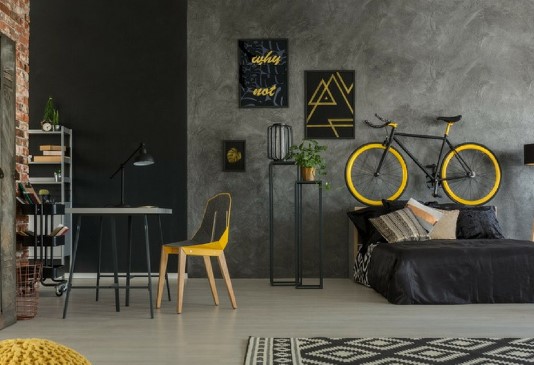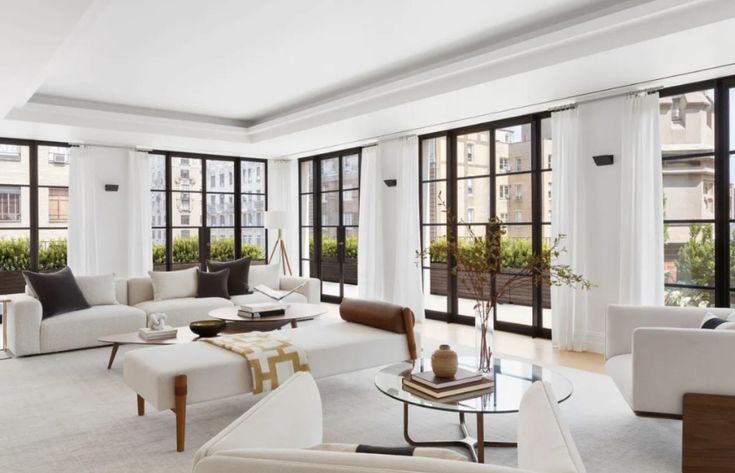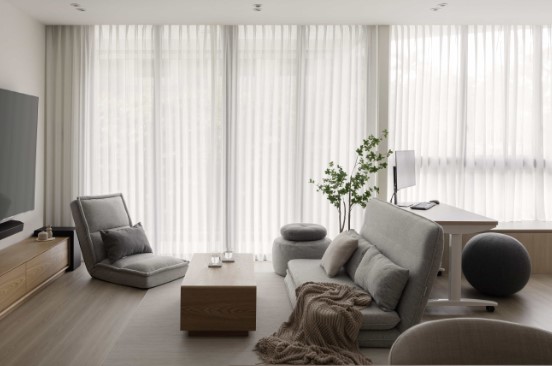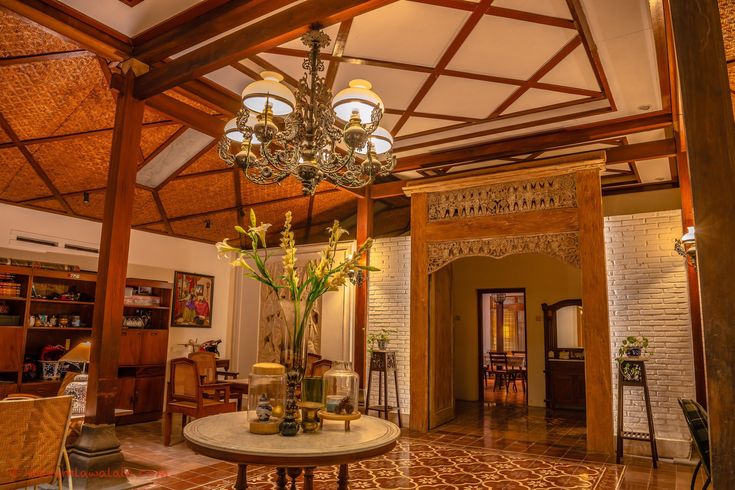Luxury Home Design Trends 2024: What’s In and What’s Out
Luxury Home Design Trends 2024: What’s In and What’s Out, luxury home design is characterized by a blend of modern technology, sustainability, and innovative architectural elements. As homeowners continue to seek unique ways to elevate their living spaces, several key trends have emerged, redefining what luxury means in the context of home design. This comprehensive guide explores the latest trends, offering detailed insights into products, benefits, and practical applications. Whether you’re planning a full renovation or simply looking to update a few aspects of your home, this article will provide you with everything you need to know to make informed decisions.
Smart Home Integration

Overview of Smart Home Technologies
Smart home integration has become a cornerstone of luxury home design. In 2024, the focus is not only on convenience but also on creating a seamless, intuitive living experience. Smart home systems allow homeowners to control various aspects of their home environment, including lighting, temperature, security, and entertainment, all from a single interface. Products like Control4 and Savant offer comprehensive solutions that integrate with a wide range of devices, providing a unified experience.
Benefits of Smart Home Integration
The benefits of smart home integration are numerous. One of the primary advantages is convenience. With a smart home system, you can control everything from your smartphone or tablet, making it easy to adjust settings even when you’re not at home. This is particularly useful for managing energy consumption, as you can remotely turn off lights or adjust the thermostat to save energy. Additionally, smart home systems can enhance security by allowing you to monitor your property in real-time and receive alerts if any unusual activity is detected.
Another significant benefit is customization. Smart home systems can be tailored to fit your specific needs and preferences. Whether you want to set up mood lighting for a dinner party or ensure that your home is secure while you’re on vacation, these systems offer a high degree of flexibility. Furthermore, smart home technology is continually evolving, with new features and integrations being added regularly. This means that your system can grow and adapt over time, ensuring that it remains relevant and useful.
Product Examples and Comparisons
- Control4
- Features: Comprehensive home automation, customizable interfaces, integration with a wide range of devices.
- Use Case: Ideal for homeowners looking for a fully integrated smart home experience.
- Pros: User-friendly interface, extensive compatibility, reliable performance.
- Cons: Higher cost, requires professional installation.
- Price: Starts at $1,000
- Savant
- Features: High-end home automation, voice control, advanced lighting solutions.
- Use Case: Suitable for luxury homes with a focus on aesthetics and high-end features.
- Pros: Sleek design, robust functionality, intuitive control options.
- Cons: Premium pricing, complex setup.
- Price: Starts at $1,500
- Google Nest
- Features: Smart thermostat, security cameras, doorbell cameras, smart speakers.
- Use Case: Perfect for homeowners looking for a versatile and affordable smart home solution.
- Pros: Easy to set up, wide range of products, strong brand reputation.
- Cons: Limited customization compared to higher-end systems.
- Price: Starts at $200
Sustainable Materials and Eco-Friendly Designs
The Rise of Sustainable Materials
Sustainability is a significant trend in luxury home design for 2024. As environmental awareness grows, more homeowners are looking for ways to reduce their carbon footprint and create eco-friendly living spaces. This trend is reflected in the increased use of sustainable materials, such as reclaimed wood, bamboo, recycled metal, and low-VOC paints. These materials not only minimize environmental impact but also offer unique aesthetic qualities that add character to any home.
Benefits of Using Sustainable Materials
The benefits of using sustainable materials extend beyond environmental considerations. One of the key advantages is durability. Many sustainable materials, such as bamboo and reclaimed wood, are incredibly durable and can withstand wear and tear better than traditional materials. This makes them a practical choice for high-traffic areas like kitchens and living rooms. Additionally, sustainable materials often have a unique look and feel, adding a distinct touch to your home’s design.
Another benefit is improved indoor air quality. Many conventional building materials contain volatile organic compounds (VOCs) that can off-gas into the air, leading to poor indoor air quality. By choosing low-VOC or zero-VOC materials, you can reduce the presence of harmful chemicals in your home, creating a healthier living environment for you and your family. Furthermore, using sustainable materials can increase the value of your home, as more buyers are looking for eco-friendly features.
Product Examples and Comparisons
- Bamboo Flooring
- Features: Sustainable, renewable, durable.
- Use Case: Ideal for eco-conscious homeowners looking for a stylish and sustainable flooring option.
- Pros: Fast-growing, strong, versatile.
- Cons: Requires specific maintenance, can be prone to scratches.
- Price: $3 to $8 per square foot
- Reclaimed Wood
- Features: Unique, eco-friendly, character-rich.
- Use Case: Perfect for adding a rustic or vintage touch to interiors.
- Pros: Recycled, sustainable, unique aesthetic.
- Cons: Can be expensive, requires careful sourcing.
- Price: $5 to $15 per square foot
- Recycled Glass Countertops
- Features: Eco-friendly, durable, low maintenance.
- Use Case: Ideal for modern kitchens and bathrooms with a focus on sustainability.
- Pros: Unique appearance, easy to clean, environmentally friendly.
- Cons: Can be more expensive than traditional countertops, limited color options.
- Price: $50 to $100 per square foot
Innovative Architectural Features
Modular and Customizable Designs
In 2024, architectural trends in luxury homes are shifting towards modular and customizable designs. These approaches offer flexibility, allowing homeowners to adapt their living spaces to their changing needs. Modular homes, for example, are built using pre-fabricated sections that can be assembled on-site. This method not only reduces construction time but also allows for greater customization, as modules can be added or removed as needed. Customizable designs, on the other hand, enable homeowners to work closely with architects and designers to create a home that reflects their personal style and preferences.
Benefits of Modular and Customizable Designs
The primary benefit of modular and customizable designs is flexibility. Unlike traditional homes, which are often limited by their original layout, modular homes can be easily modified to accommodate changes in lifestyle or family size. This makes them an excellent choice for homeowners who want a home that can grow and evolve with them. Additionally, modular construction is often more cost-effective than traditional building methods, as it reduces labor costs and construction time.
Another significant benefit is sustainability. Modular homes are typically built using sustainable materials and construction practices, resulting in less waste and a smaller carbon footprint. Furthermore, the ability to customize your home allows you to incorporate energy-efficient features and technologies, such as solar panels and high-efficiency HVAC systems. This can significantly reduce your home’s energy consumption and lower your utility bills.
Product Examples and Comparisons
- Modular Home Kits
- Features: Pre-fabricated sections, customizable layouts, quick assembly.
- Use Case: Ideal for homeowners looking for a cost-effective and flexible housing solution.
- Pros: Fast construction, lower costs, sustainable.
- Cons: Limited design options, may require specific site conditions.
- Price: Starting from $50,000
- Custom Home Design Services
- Features: Personalized design, tailored to client needs, unique architectural features.
- Use Case: Suitable for homeowners who want a one-of-a-kind home that reflects their style.
- Pros: Highly customizable, unique design, high quality.
- Cons: Can be expensive, longer design and construction process.
- Price: Varies widely based on design and location
- 3D-Printed Homes
- Features: Innovative construction method, rapid building, sustainable.
- Use Case: Perfect for eco-conscious homeowners looking for a futuristic and sustainable home.
- Pros: Fast construction, reduced waste, customizable.
- Cons: Limited availability, still a developing technology.
- Price: Starting from $10,000
Benefits of Embracing Luxury Home Design Trends 2024
Enhanced Aesthetics and Value
One of the most significant benefits of embracing luxury home design trends in 2024 is the potential for enhanced aesthetics and increased property value. Luxury design trends often set the tone for high-end aesthetics, and incorporating these elements can elevate the overall look and feel of your home. From sleek, modern finishes to timeless architectural details, these trends offer a variety of options to suit different tastes and preferences. Additionally, investing in luxury design features can increase your home’s resale value, as they are often associated with high-quality construction and materials.
Improved Functionality and Comfort
Luxury home design trends also focus on improving functionality and comfort. Smart home technologies, for example, offer a level of convenience and control that can significantly enhance your daily life. Whether it’s adjusting the thermostat from your smartphone or setting the perfect lighting for a dinner party, these technologies provide a seamless and intuitive user experience. Similarly, innovations in architectural design and sustainable materials can create more comfortable and efficient living spaces, making your home a more enjoyable place to live.
Sustainability and Environmental Impact
As environmental concerns continue to grow, sustainability has become a key consideration in luxury home design. By incorporating sustainable materials and energy-efficient technologies, you can reduce your home’s environmental impact and contribute to a more sustainable future. This not only benefits the planet but can also lead to cost savings in the form of lower utility bills and potential tax incentives. Furthermore, eco-friendly homes are becoming increasingly desirable in the real estate market, which can enhance your property’s appeal to potential buyers.
Where to Buy and How to Buy
Finding the Right Products and Services
When it comes to purchasing luxury home design products, it’s essential to do thorough research and choose reputable brands and retailers. Many high-end home improvement stores and online platforms offer a wide range of products, from smart home systems to sustainable building materials. Additionally, consider consulting with a professional interior designer or architect who specializes in luxury homes. They can provide valuable insights and recommendations, helping you make informed decisions and achieve the best results.
Making Informed Decisions
When purchasing luxury home products, consider factors such as quality, warranty, and customer reviews. It’s also crucial to compare prices and features to ensure you’re getting the best value for your money. Many retailers offer virtual consultations or showroom visits, allowing you to see products in person or get a detailed look through video calls. This can be particularly helpful when choosing materials or finishes, as it gives you a better sense of their texture, color, and overall quality.
Links to Purchase
- Buy Control4 Smart Home Systems
- Buy Savant Smart Home Systems
- Buy Google Nest Products
- Buy Bamboo Flooring
- Buy Reclaimed Wood
- Buy Recycled Glass Countertops
- Buy Modular Home Kits
Detailed Use Cases
Smart Home Technologies in Daily Life
Smart home technologies can significantly enhance your daily life by automating routine tasks and providing greater control over your home’s environment. For example, a smart thermostat can learn your schedule and preferences, automatically adjusting the temperature to ensure comfort and energy efficiency. Smart lighting systems can create different moods and ambiances, making it easy to transition from work mode to relaxation mode. Additionally, smart security systems offer peace of mind by providing real-time monitoring and alerts, whether you’re at home or away.
Sustainable Materials in Home Renovation
Incorporating sustainable materials into your home renovation can have a positive impact on both your home’s aesthetics and the environment. For instance, using reclaimed wood for flooring or accent walls adds a unique and rustic charm to your space while repurposing existing materials. Similarly, opting for recycled glass countertops not only provides a stylish and modern look but also reduces the demand for new raw materials. These choices can make your home more eco-friendly and set a positive example for sustainable living.
Modular and Customizable Designs for Growing Families
Modular and customizable home designs are particularly beneficial for growing families or those with changing needs. These designs offer the flexibility to add new rooms or modify existing spaces without the need for a complete rebuild. For example, a modular home can be expanded with additional bedrooms or living areas as your family grows. Customizable designs also allow you to personalize your home layout and features, ensuring that it meets your specific needs and preferences. This adaptability makes it easier to create a home that evolves with you over time.
FAQ
What are the key trends in luxury home design for 2024?
The key trends in luxury home design for 2024 include smart home integration, sustainable materials, and innovative architectural features. These trends focus on enhancing both the aesthetics and functionality of homes while promoting eco-friendly practices.
Why should I choose sustainable materials for my luxury home?
Choosing sustainable materials for your luxury home offers several benefits, including reduced environmental impact, improved indoor air quality, and increased durability. Sustainable materials are often made from renewable resources and have a lower carbon footprint, making them a more eco-friendly choice.
How do smart home technologies enhance home security?
Smart home technologies enhance home security by providing real-time monitoring, remote access, and automated alerts. For example, smart cameras can stream live footage to your smartphone, allowing you to keep an eye on your property from anywhere. Additionally, smart locks and alarm systems can be controlled remotely, offering greater convenience and peace of mind.
Are these luxury home products easy to install and maintain?
Many luxury home products are designed to be user-friendly and easy to install. For instance, smart home systems often come with straightforward setup instructions and can be managed through user-friendly apps. However, some products, such as modular homes or custom designs, may require professional installation and maintenance. It’s important to consider these factors when planning your home upgrades.
Where can I find inspiration for luxury home designs?
Inspiration for luxury home designs can be found in various sources, including design magazines, online platforms, and home improvement shows. Additionally, visiting showrooms or consulting with professional designers can provide valuable insights and ideas tailored to your specific tastes and needs.






